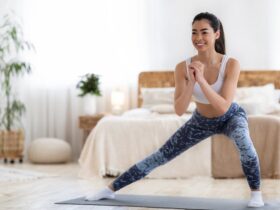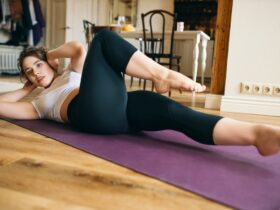The world of physical fitness and well-being is vast, offering myriad exercise forms and therapy modalities.
Among them, two popular approaches are somatic exercises and yoga.
While they share some similarities, such as the focus on body awareness and natural movement patterns, understanding their differences provides deeper insight into which practice might be best suited to your individual needs.
Overview of Somatic Exercises
Somatic exercises are a form of movement therapy that focuses on the conscious perception of one’s own body.
This type of exercise aims to improve bodily awareness, releasing tension in the muscles, joints, and fascia.
The somatic approach can be considered both therapeutic and educational, with its central premise being the re-establishment of healthy communication between the body and the brain.
Origin and Principles
Thomas Hanna was the pioneer behind somatics, founding the system known as “Hanna Somatic Education.”
Hanna believed that chronic physical pain originates from unhealthy movement habits developed over time.
Through slow, gentle movements, he aimed to help individuals regain control over their muscle functioning and experience greater ease and freedom in their bodies.
As part of this practice, three main principles are emphasized: sensory motor learning, muscular release, and neural plasticity.
- Sensory motor learning: Developing an increased awareness of how one moves and what sensations arise during movement.
- Muscular release: Techniques designed to lengthen muscles and release tension, restoring balance in the nervous system.
- Neural plasticity: The brain’s ability to adapt and change through learning new movement patterns and improving proprioception.
Read also : Discover the power of somatic workouts for better health
Common Techniques
In somatic exercises, practitioners often use tools like foam rollers or blocks to facilitate gentle movement and myofascial release.
Among the most widely recognized techniques are:
- Pandiculations: Slow, controlled muscle contractions and releases designed to increase body awareness and muscular control.
- Sequential breathing: Coordinate inhaling and exhaling with specific body movements for better breath control and proprioception.
- Active stretching: Encourage lengthening of muscles through active engagement and measured movements.
Overview of Yoga
Yoga is an ancient practice that originated in India thousands of years ago. It is a holistic approach to well-being involving physical postures, breath control, meditation, and ethical principles.
Rooted in spirituality, yoga aims to enhance mind-body connection, create balance, and promote harmony between the individual and the external world.
Physical Postures and Alignment
In Hatha Yoga, which is the most commonly practiced form of yoga in the Western world, emphasis is placed on physical postures (asanas) and proper alignment.
Practitioners aim to develop strength, flexibility, and balance in the body while simultaneously focusing on breathwork and mindfulness.
A wide variety of poses target different areas of the body and serve different purposes, such as promoting relaxation, energizing the body, or detoxifying organs.
Breathing Practices and Meditation
Pranayama, or breath control, plays a central role in yoga practice. Pranayama involves various techniques that teach individuals how to consciously regulate their breath, helping to calm the nervous system and bring mental clarity.
In addition, meditation forms an essential part of yoga, with the ultimate goal of achieving a state known as “samadhi,” or complete integration and unity with the self.
Comparing Somatic Exercises and Yoga
Fundamental Focus
While both somatics and yoga emphasize body awareness and the importance of natural movement, their primary focus differs.
Somatic exercises primarily target redefining the relationship between the brain and muscles to restore biomechanical balance, while yoga encompasses a broader spectrum that includes ethical principles and spiritual growth in addition to physical postures and breath control.
Techniques and Movements
Somatic exercises often involve slow, controlled movements and an emphasis on gentle muscular release. In contrast, yoga poses tend to be more diverse, ranging from simple restorative poses to complex and dynamic sequences.
Many yoga practices also include inversions, twists, and backbends, which have no direct counterpart in somatic exercises.
Purpose and Goals
Somatic exercises are typically practiced with a specific therapeutic intent, such as releasing chronic muscle tension or improving mobility limitations.
On the other hand, yoga’s holistic approach targets overall well-being and personal development, extending beyond simply addressing physical discomforts.
Cultural and Spiritual Roots
Yoga has a long-standing history and rich philosophical background rooted in Indian culture and spirituality.
It is deeply intertwined with concepts like karma, dharma, and moksha. In comparison, somatic exercises are relatively modern and largely devoid of religious or cultural connotations.
This difference may make somatics more appealing for individuals who prefer a secular approach to wellness and embodiment practice.
Making an Informed Choice
When considering which practice might best suit your needs, it’s important to acknowledge personal preferences, objectives, and circumstances.
Both somatic exercises and yoga offer unique benefits that can greatly enhance one’s physical and emotional well-being.
By understanding their core principles and methodologies, you’ll have a better foundation for choosing the approach that resonates most with your individual path to health and wellness.







